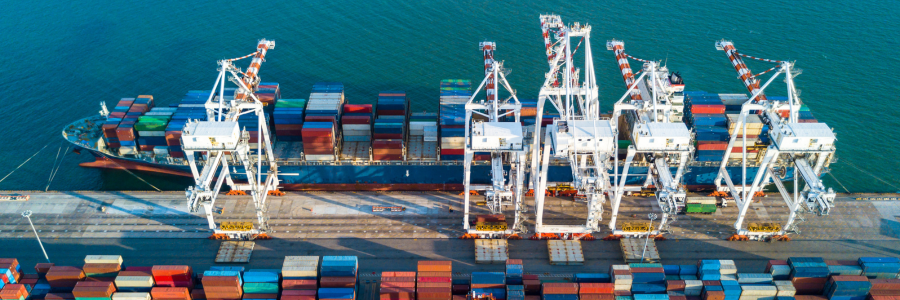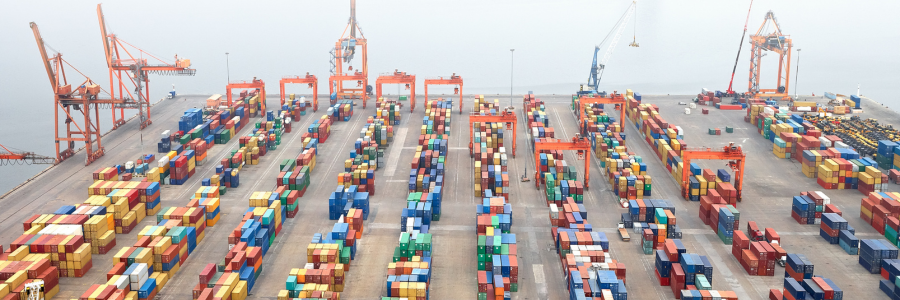The global freight forwarding industry is bracing for a series of significant regulatory changes in 2024. These changes, which span across both sea freight and airfreight, promise to reshape the landscape of international trade and logistics. Freight forwarders, at the heart of this evolution, must be well-prepared to navigate these new regulations to maintain efficiency and compliance. In this blog, we explore the major regulatory shifts expected in 2024 and their implications for global freight forwarders.

Air Freight Adjustments: IATA's 2024 Outlook
The International Air Transport Association (IATA) plays a pivotal role in setting global air cargo standards. In 2024, IATA's updated manuals will be the essential source for the latest state and carrier regulations, industry trends, and best practices. These changes are likely to address a range of issues, from safety and security to environmental standards. Freight forwarders must stay informed about these updates to ensure smooth air cargo operations, especially considering the increasingly stringent focus on sustainability and security in the aviation sector.
Sea Freight's Turbulent Waters: Economic and Environmental Pressures
The sea freight market in 2024 is poised to face its own set of challenges. Economic factors such as fluctuating freight rates and operational costs will be major considerations. Forecasts suggest that container liners may struggle with profitability due to sunken freight rates and higher operational costs amid a challenging market environment. This scenario creates a dual-edge sword for freight forwarders: while low rates may be beneficial for shippers, the financial health of carriers could impact service quality and availability.
On the environmental front, regulatory pressures are mounting. Initiatives for reducing emissions and promoting sustainability are expected to gain momentum. The focus will likely be on the implementation of green technologies and alternative fuels, a shift that could significantly impact operational practices and costs.

Regional Highlights: North America's Negotiation Hurdles and Asia's Congestion Concerns
Specific regions will face unique challenges. In North America, particularly at the Port of Montréal, contract expirations and wage negotiations are set to occur at the end of 2024. Given historical challenges at this port, freight forwarders should prepare for potential disruptions and protracted negotiations.
In the U.S., several factors will influence freight forwarding operations. Adjustments in port-to-port space, congestion at Asian transshipment ports, new vessel capacity, and temporary barge suspensions will impact freight movement. Additionally, the introduction of new vessels in Asia is expected to widen the gap between capacity and demand, potentially leading to overcapacity and rate volatility.
In South America, weather-related disruptions and container availability issues in Brazil, coupled with infrastructure developments in other regions, are expected to have a significant impact on shipping operations. These factors underscore the importance of agility and adaptability in freight forwarding strategies.

Strategies for Success: Embracing Change and Innovation
To navigate these regulatory shifts, freight forwarders must employ a multi-faceted approach. Staying informed and proactive is key. This involves:
Regularly Monitoring Regulatory Updates: Keeping abreast of changes in regulations by following updates from IATA, maritime organizations, and regional authorities.
Building Agile Supply Chains: Flexibility and adaptability in operations will be crucial. This includes diversifying transport modes and routes, and developing contingency plans for disruptions.
- Investing in Technology and Sustainability: Embracing digital tools for better tracking, compliance, and efficiency. Additionally, integrating sustainable practices will not only ensure regulatory compliance but also cater to the growing demand for eco-friendly logistics solutions.
Collaboration and Communication: Strengthening relationships with carriers, clients, and regulatory bodies to stay ahead of changes and negotiate effectively in challenging situations.
Training and Development: Investing in staff training to ensure teams are well-versed in new regulations and technologies.
Conclusion: Preparing for a Dynamic Future
The year 2024 is set to be a landmark year for the global freight forwarding industry, marked by significant regulatory changes. While these changes present challenges, they also offer opportunities for forwarders to innovate, improve efficiency, and drive sustainable practices. By staying informed, flexible, and proactive, freight forwarders can turn these regulatory waves into winds of success